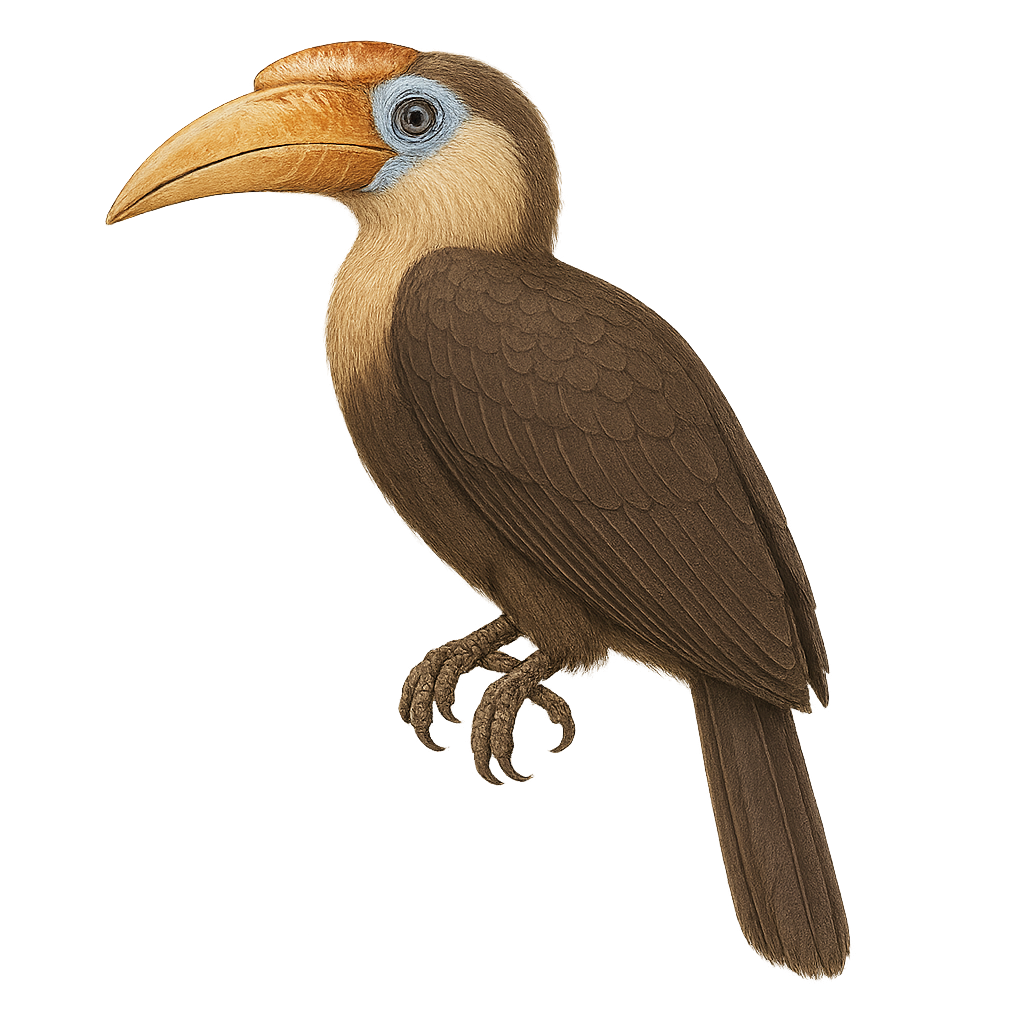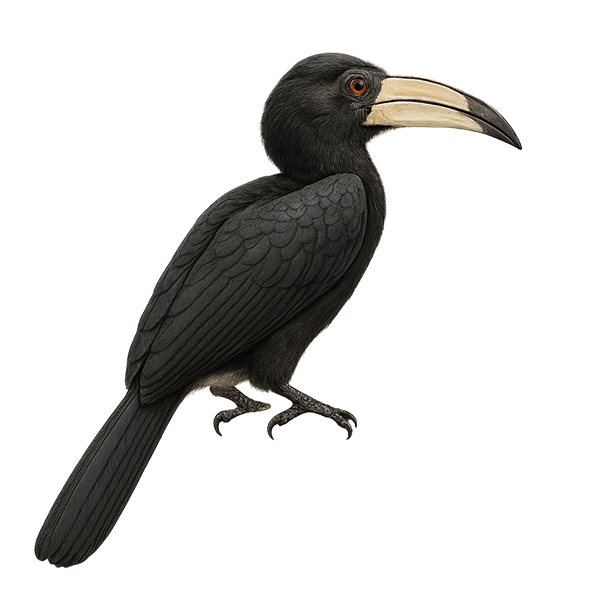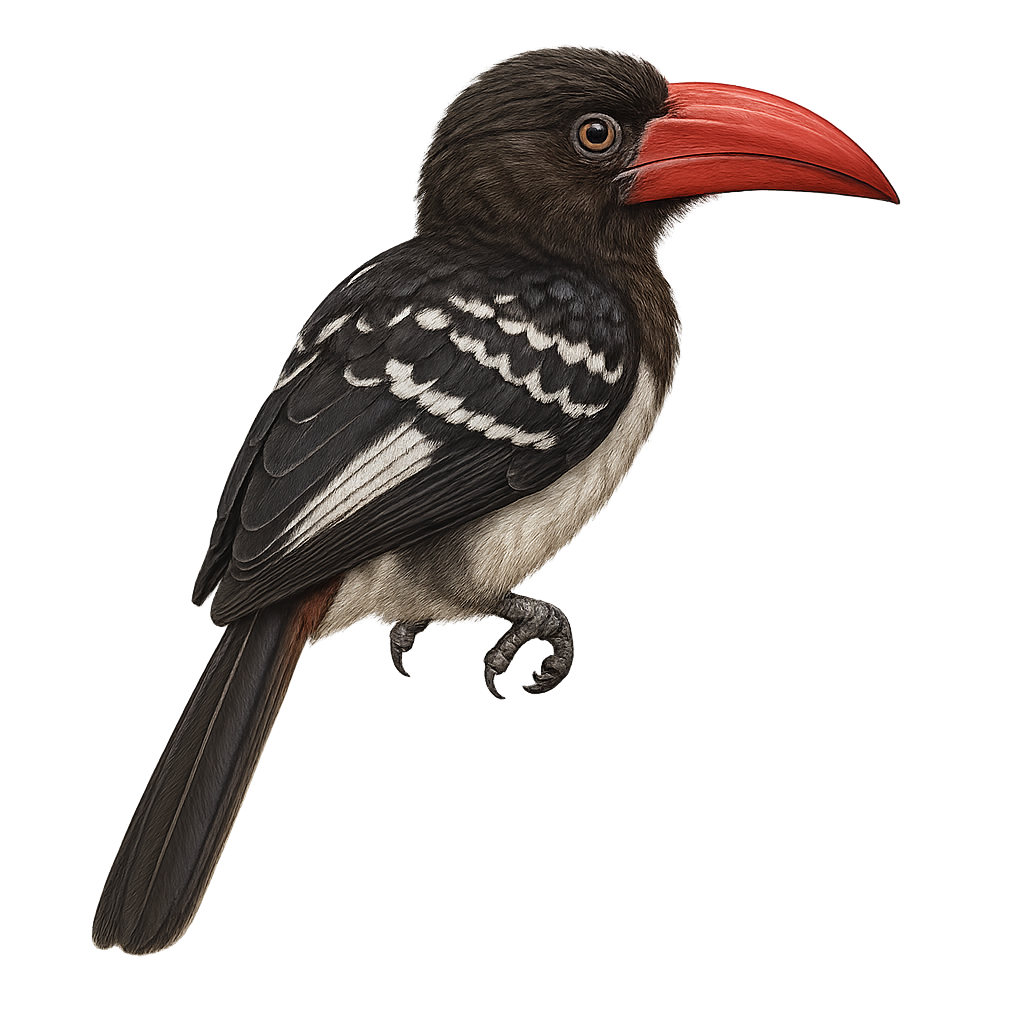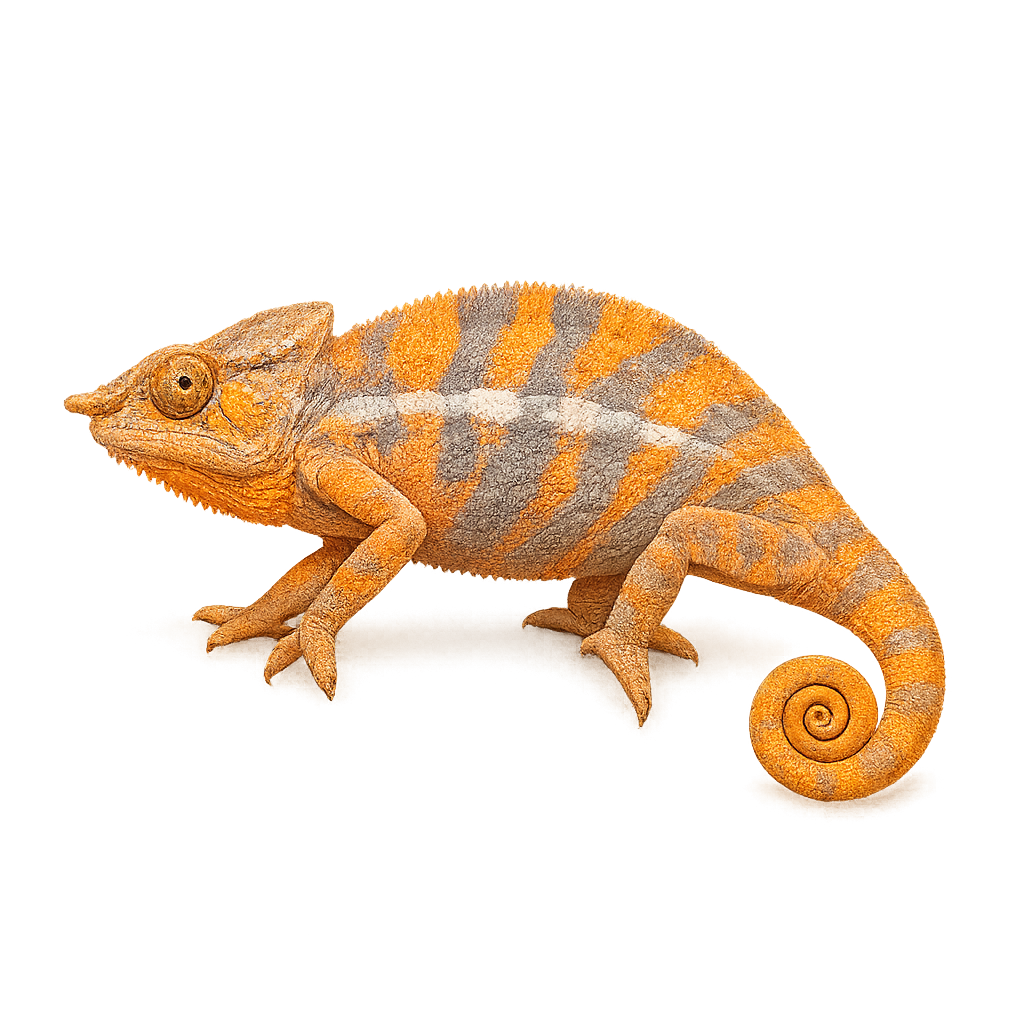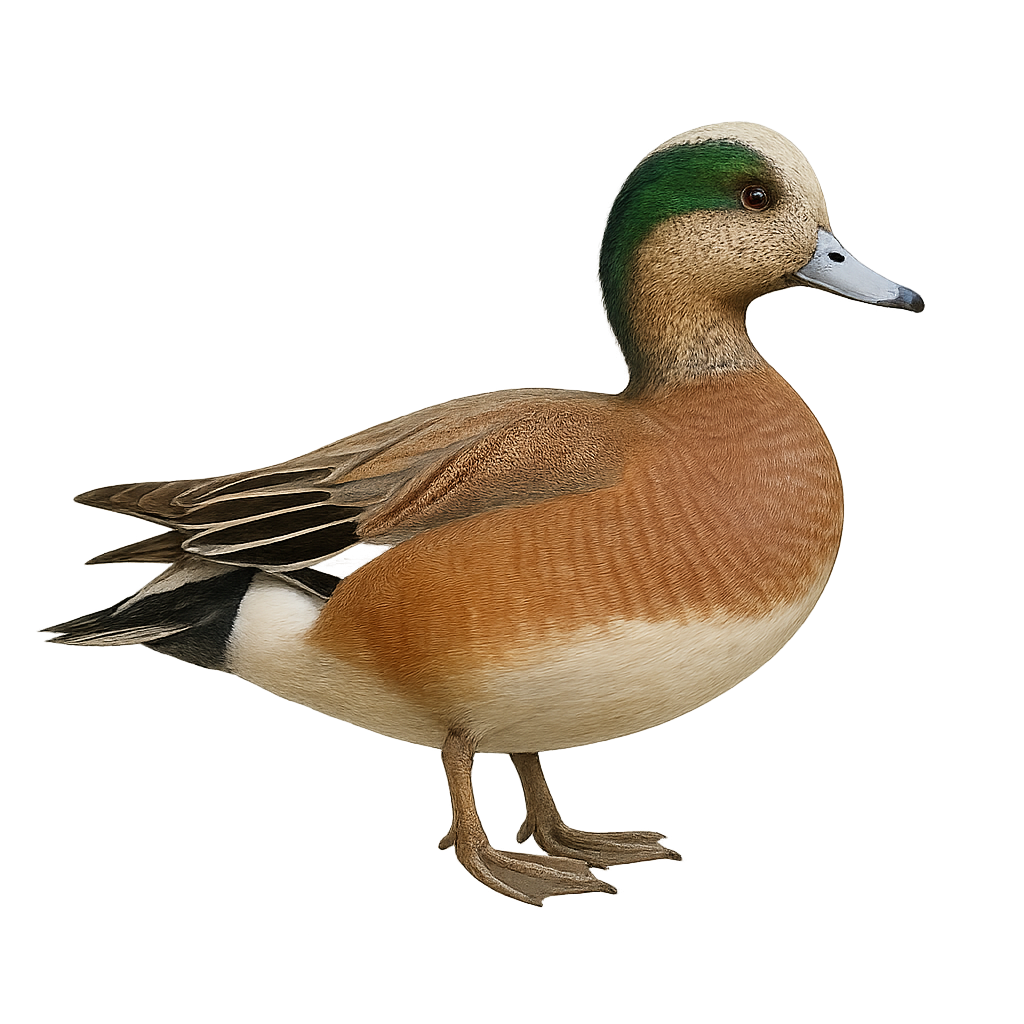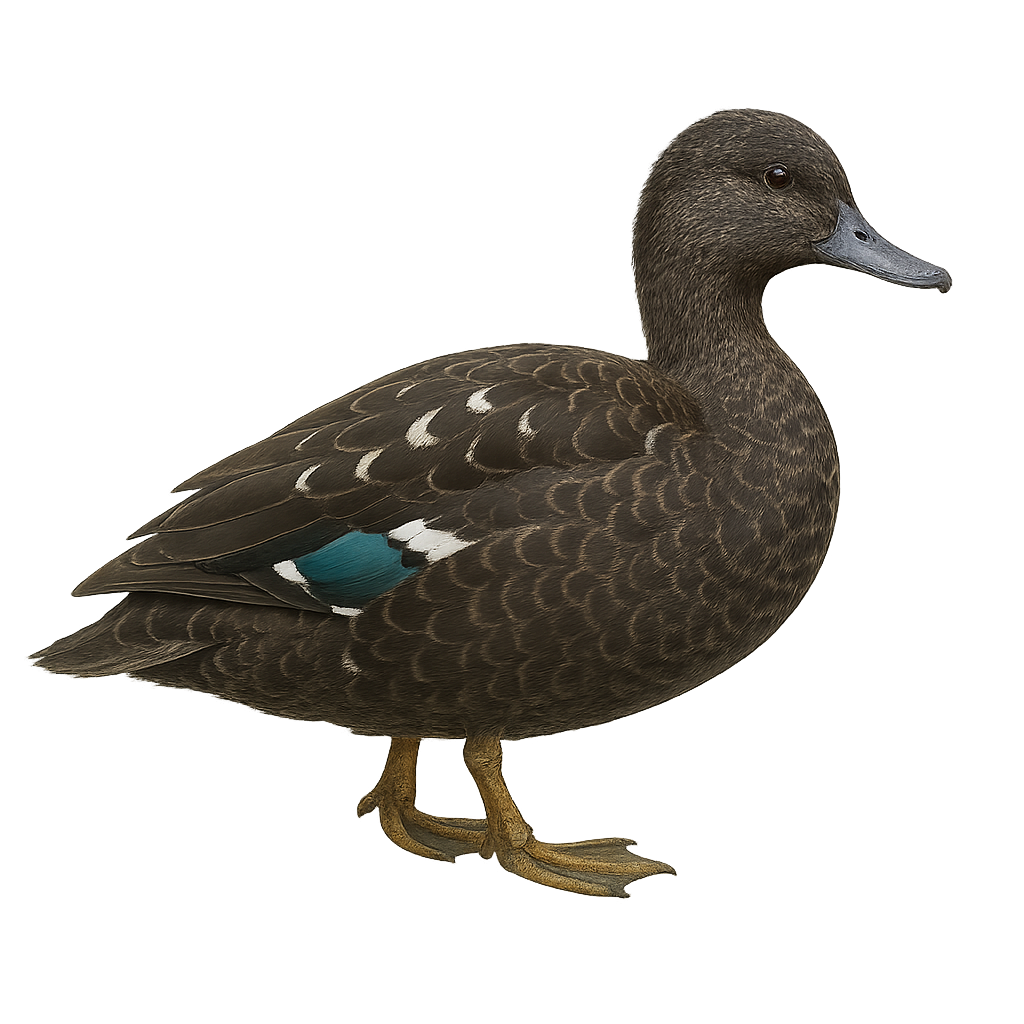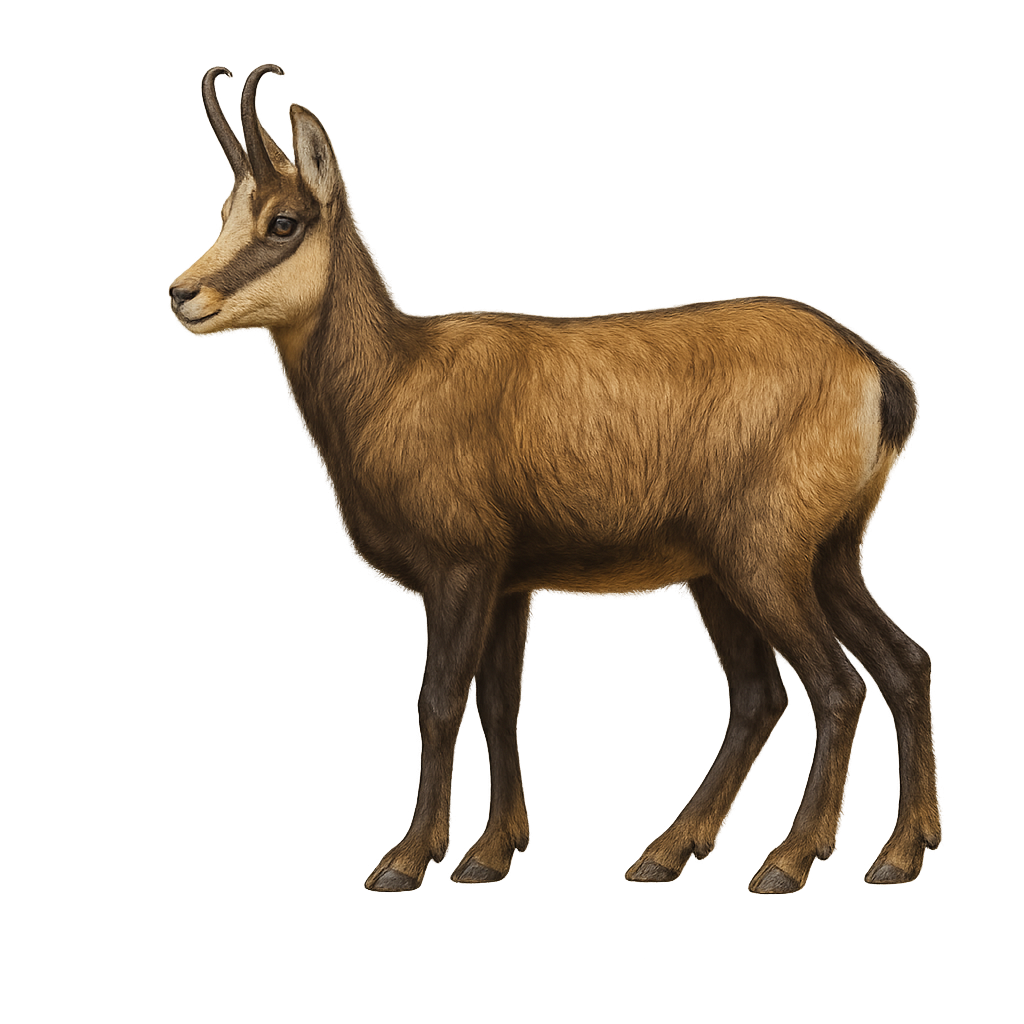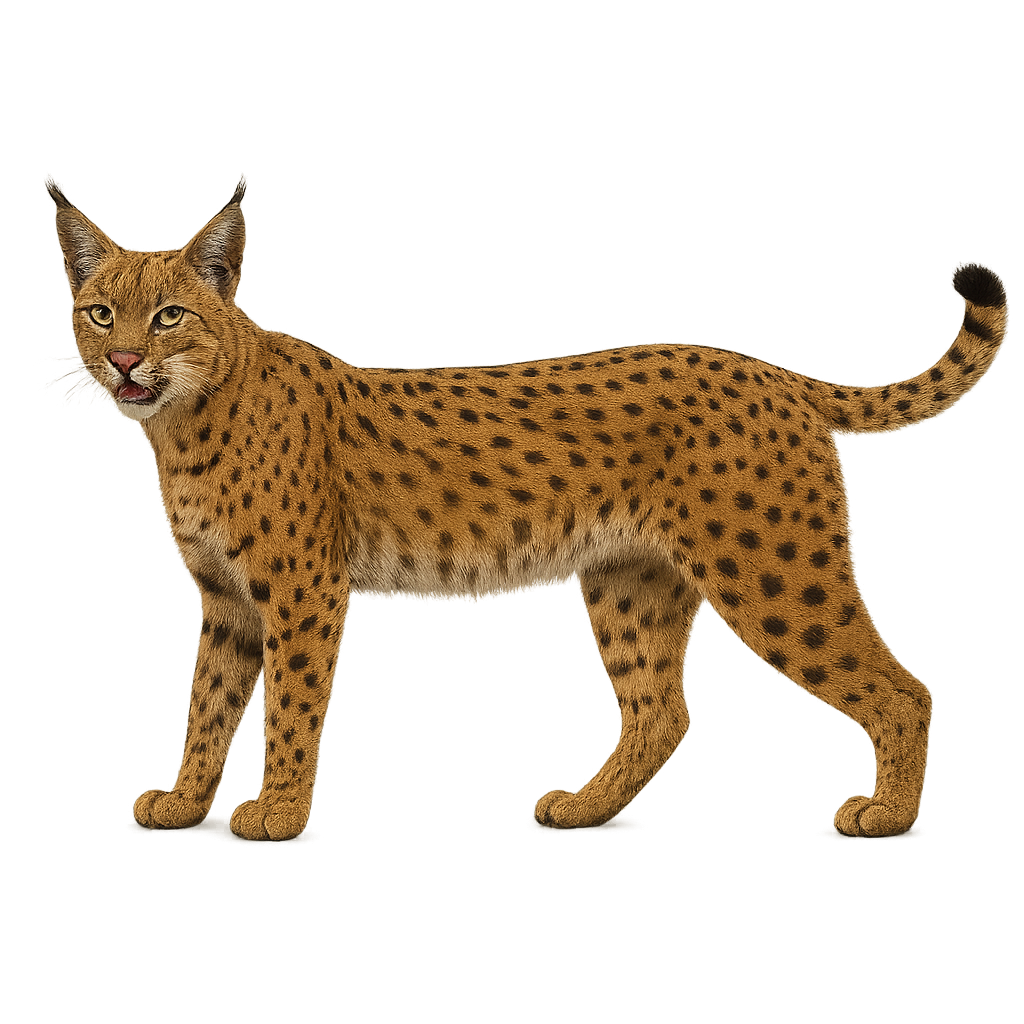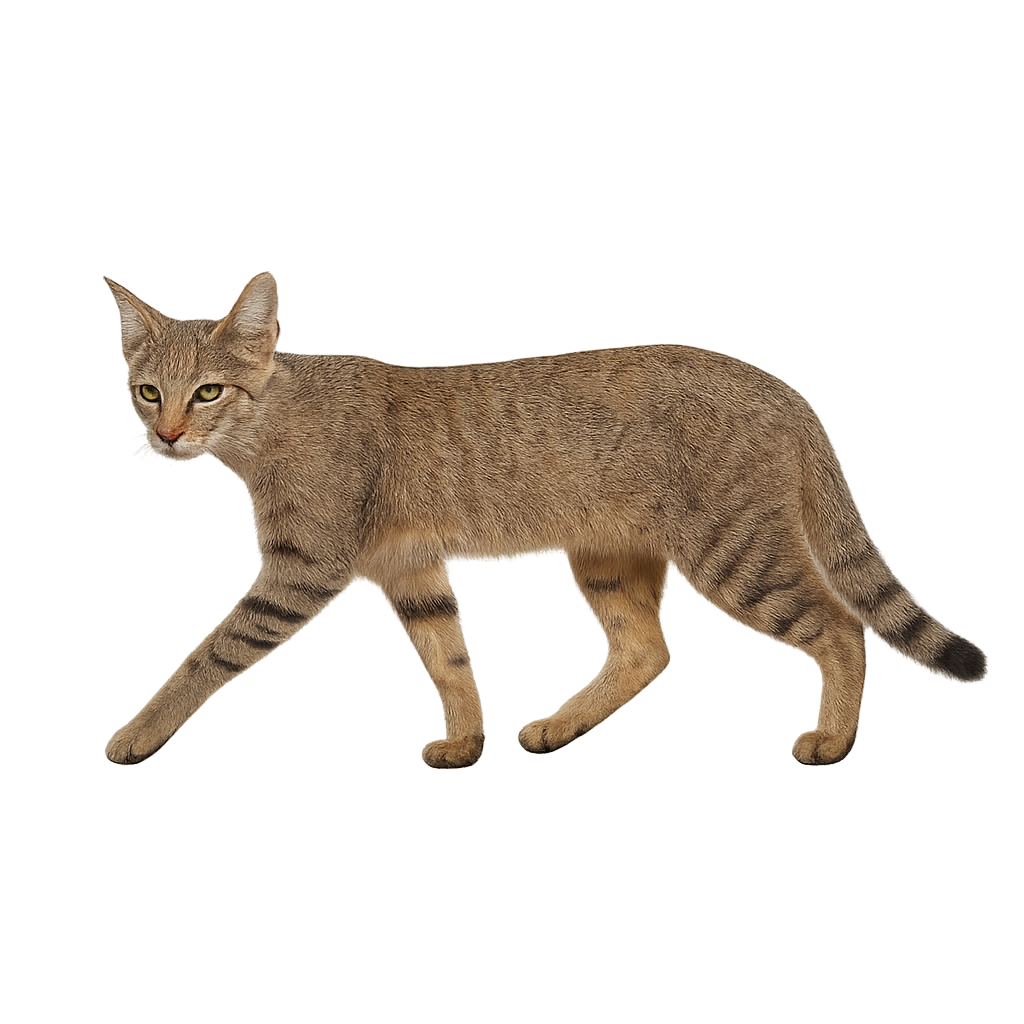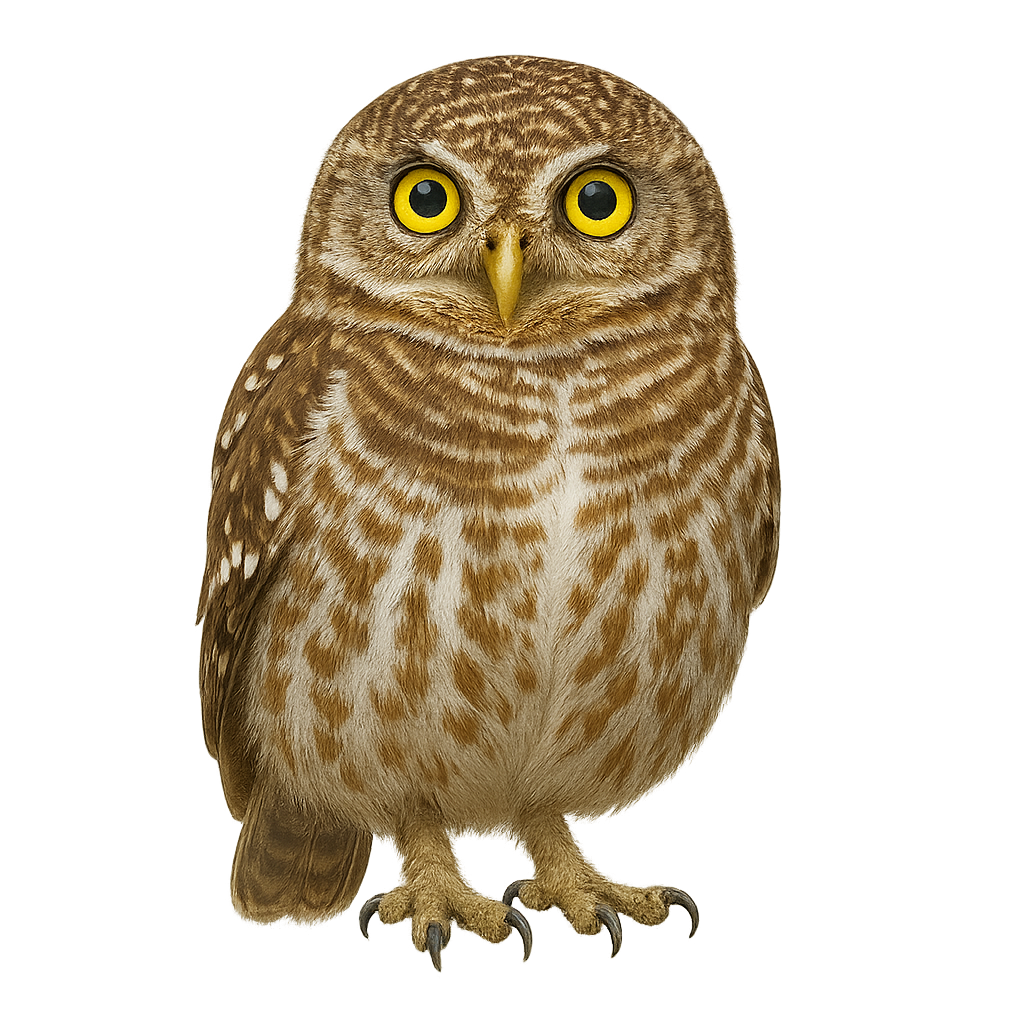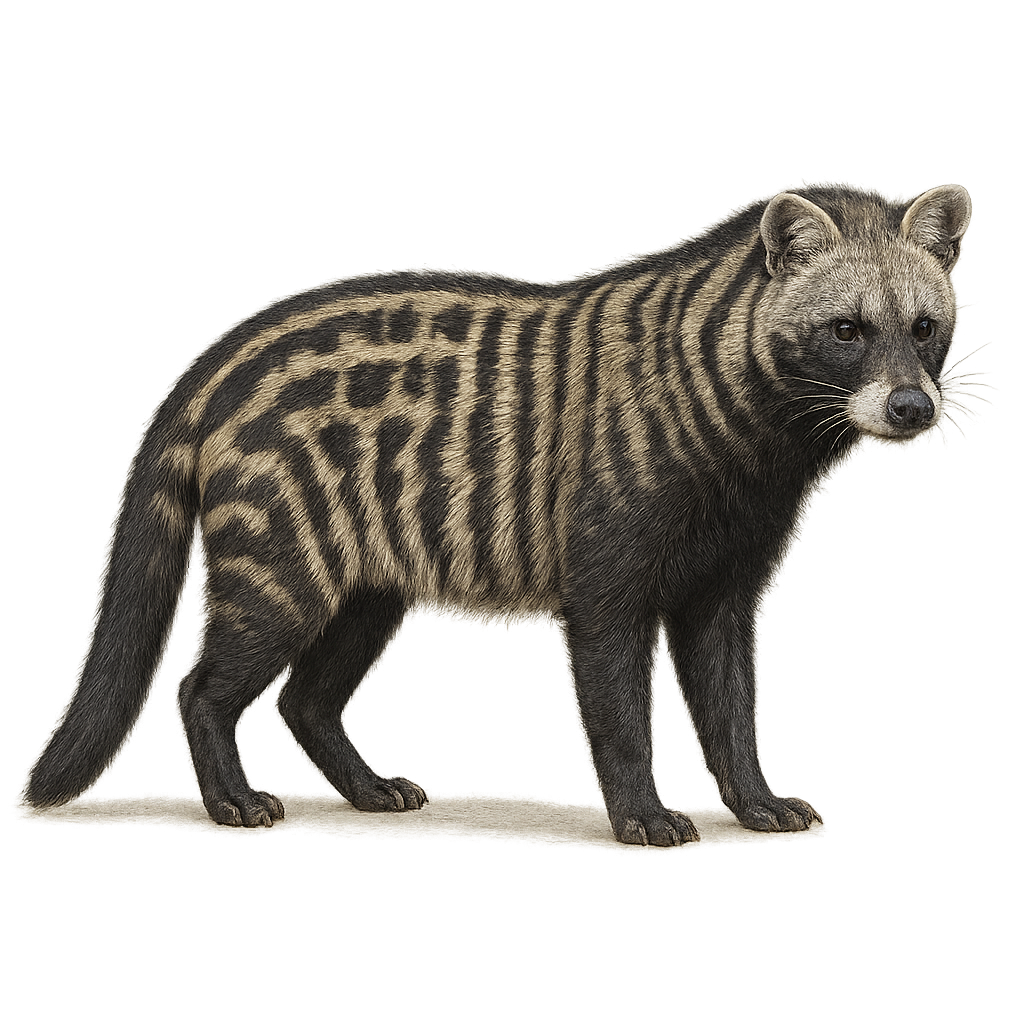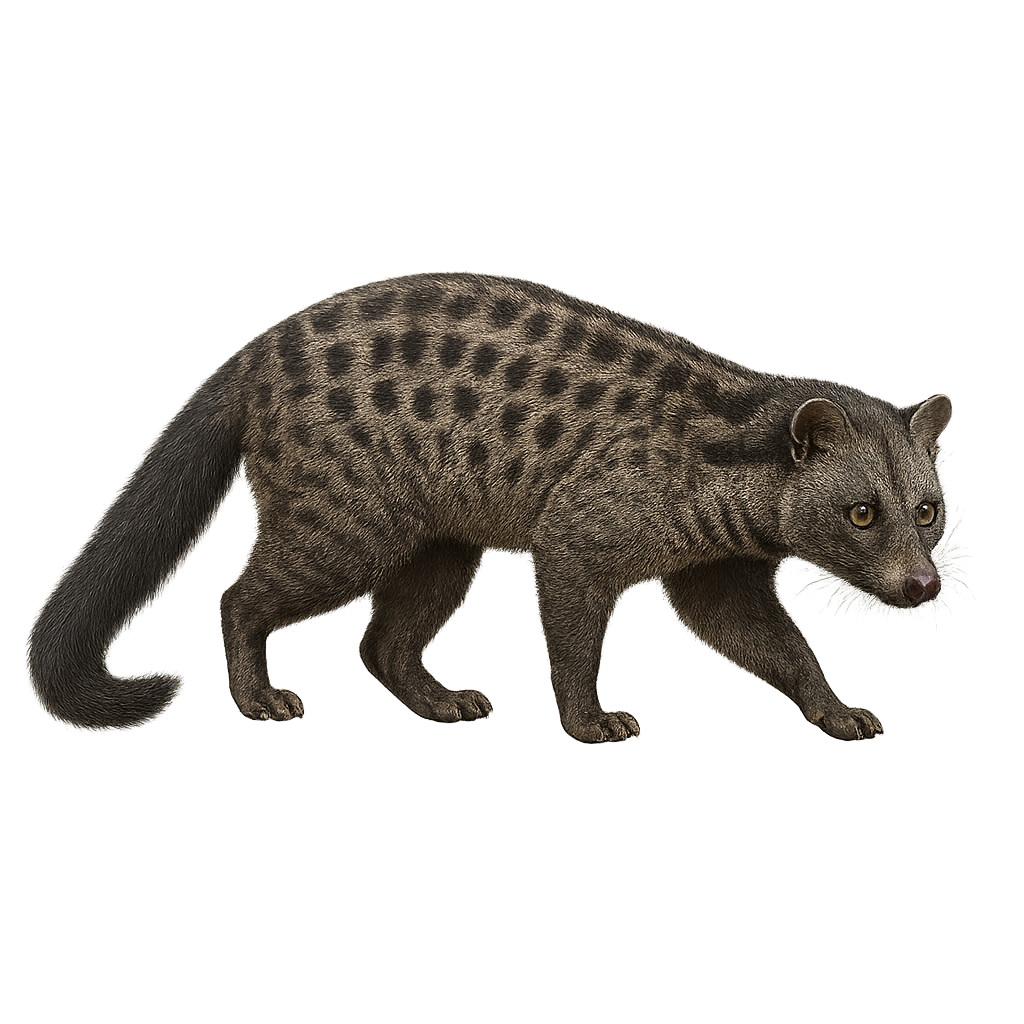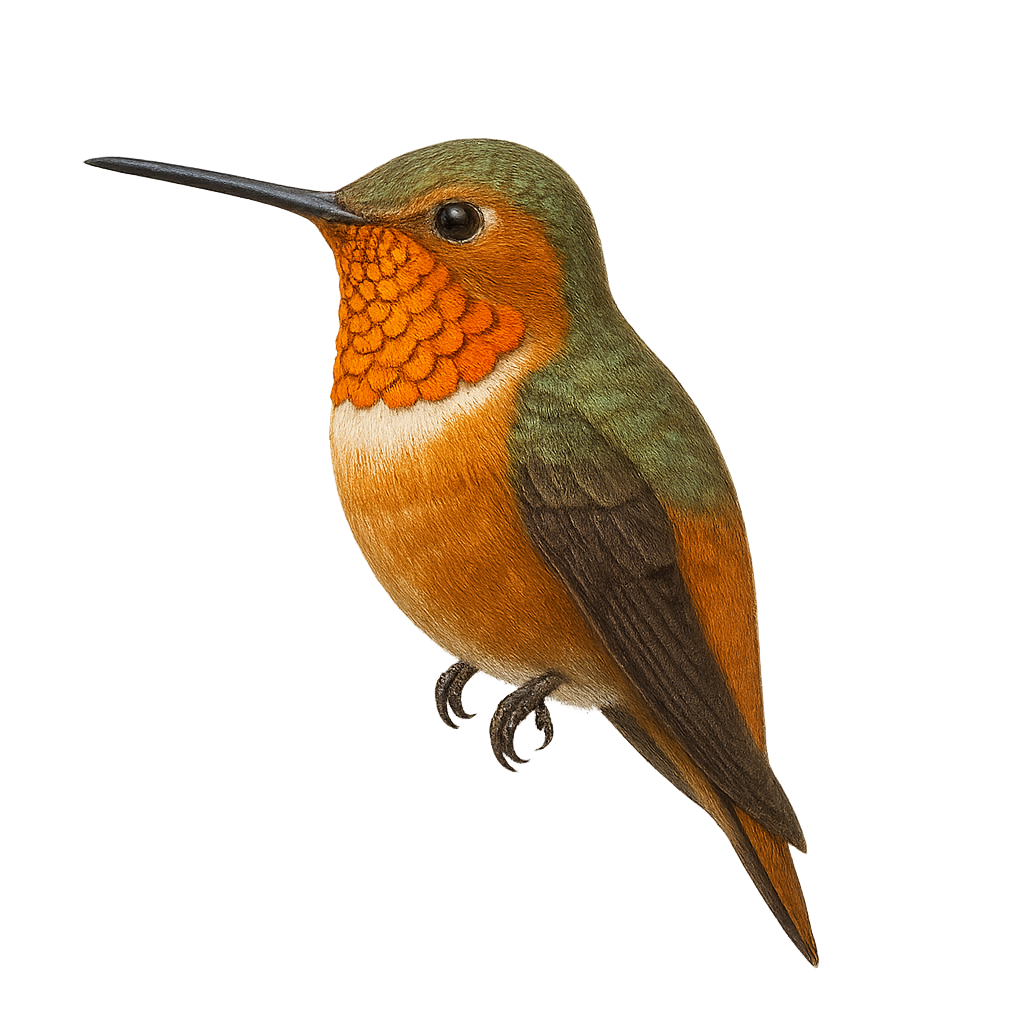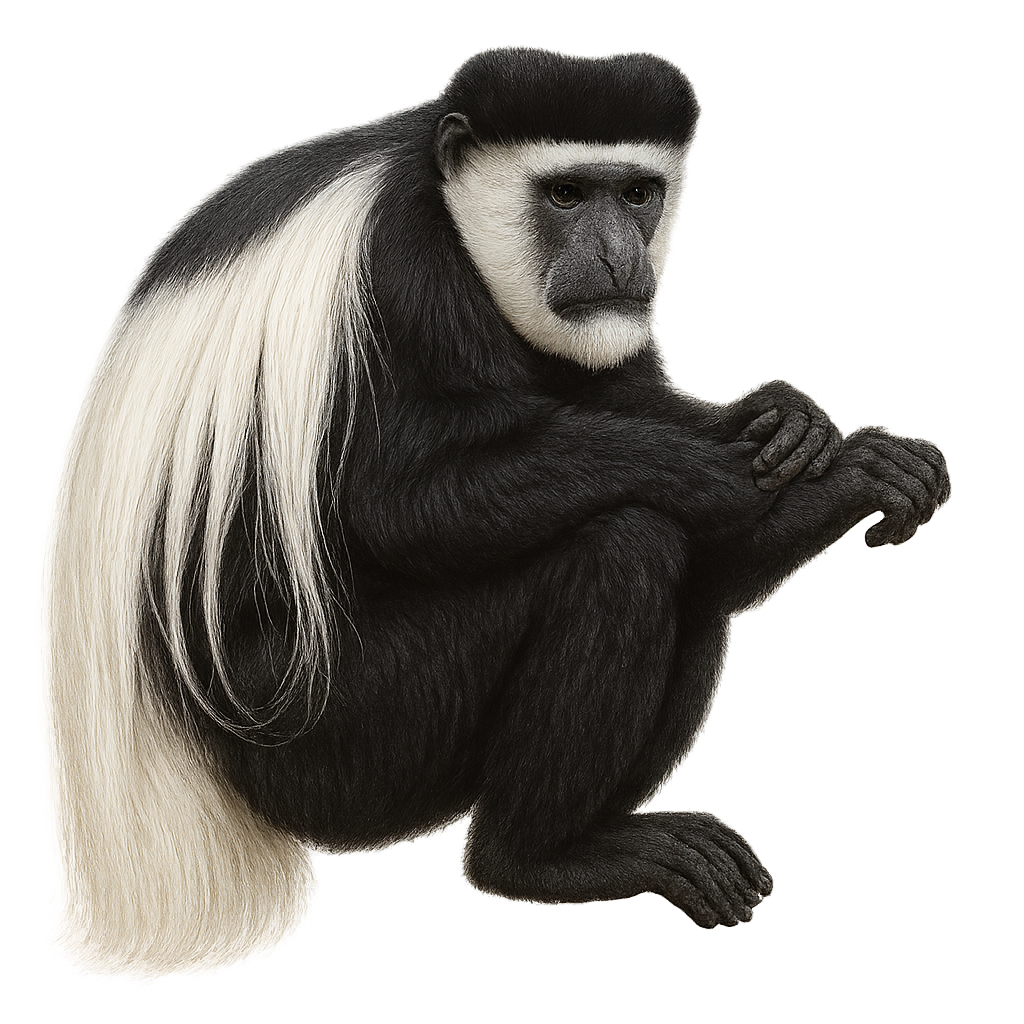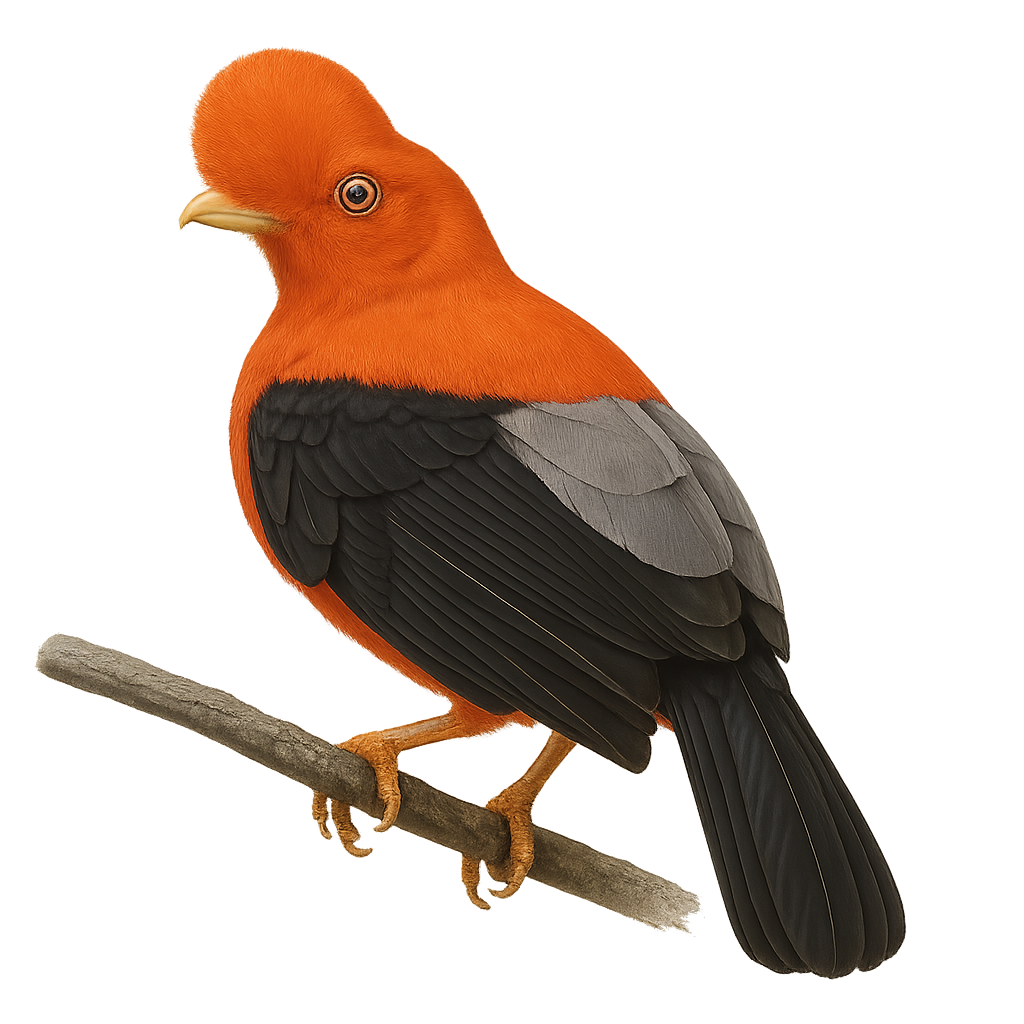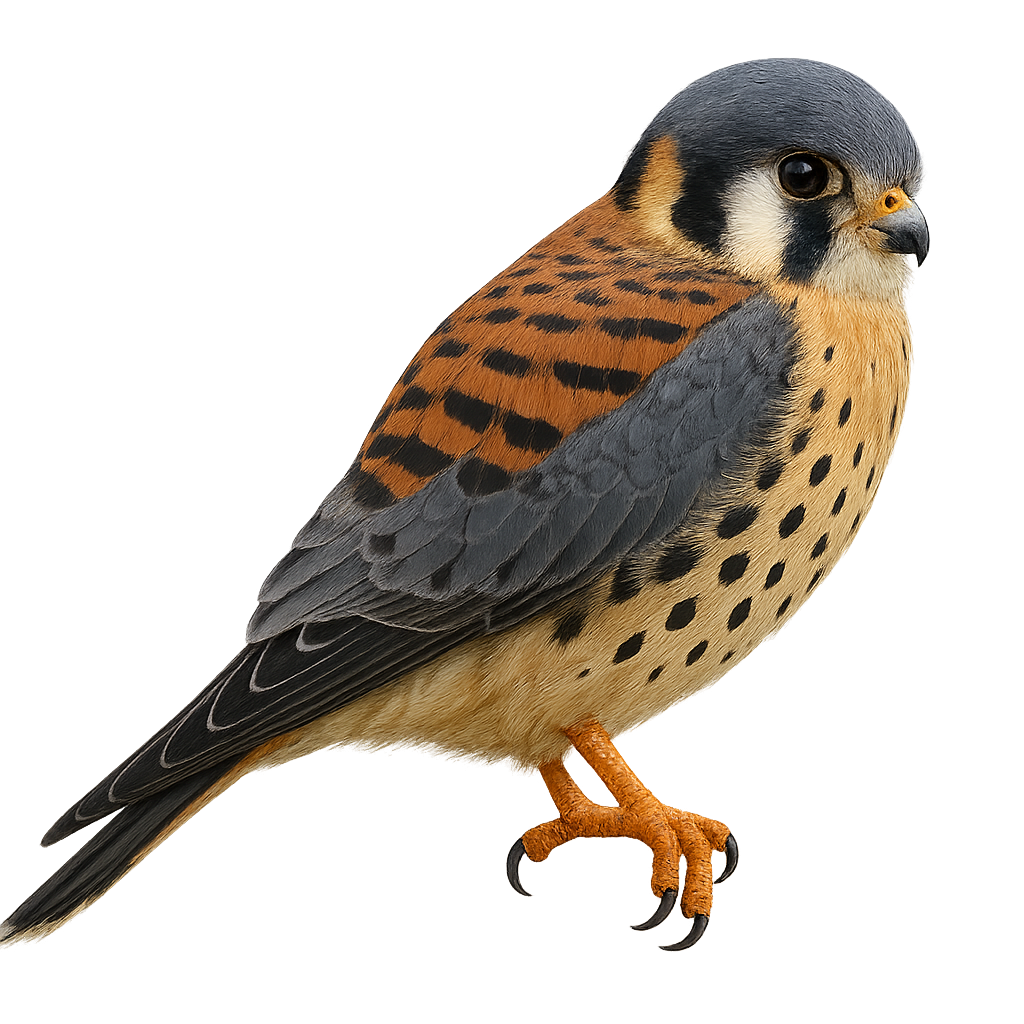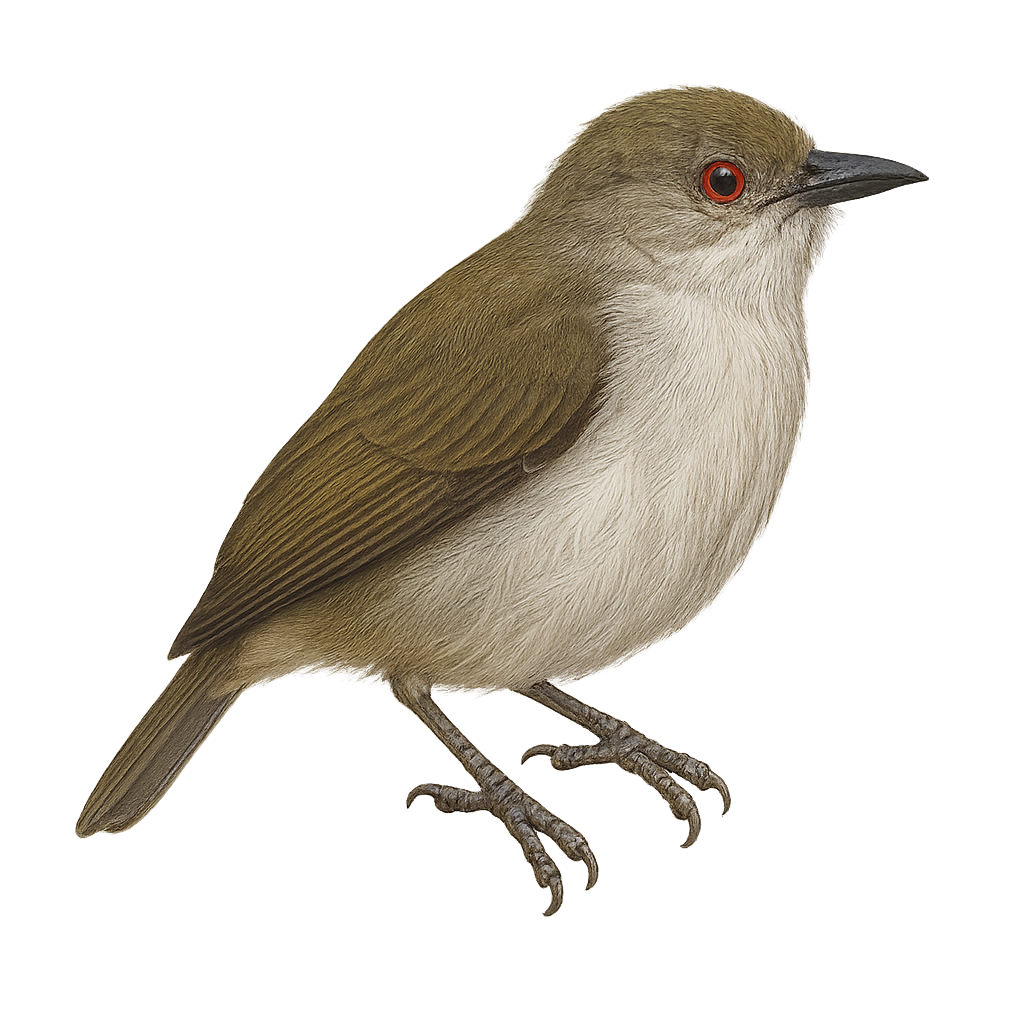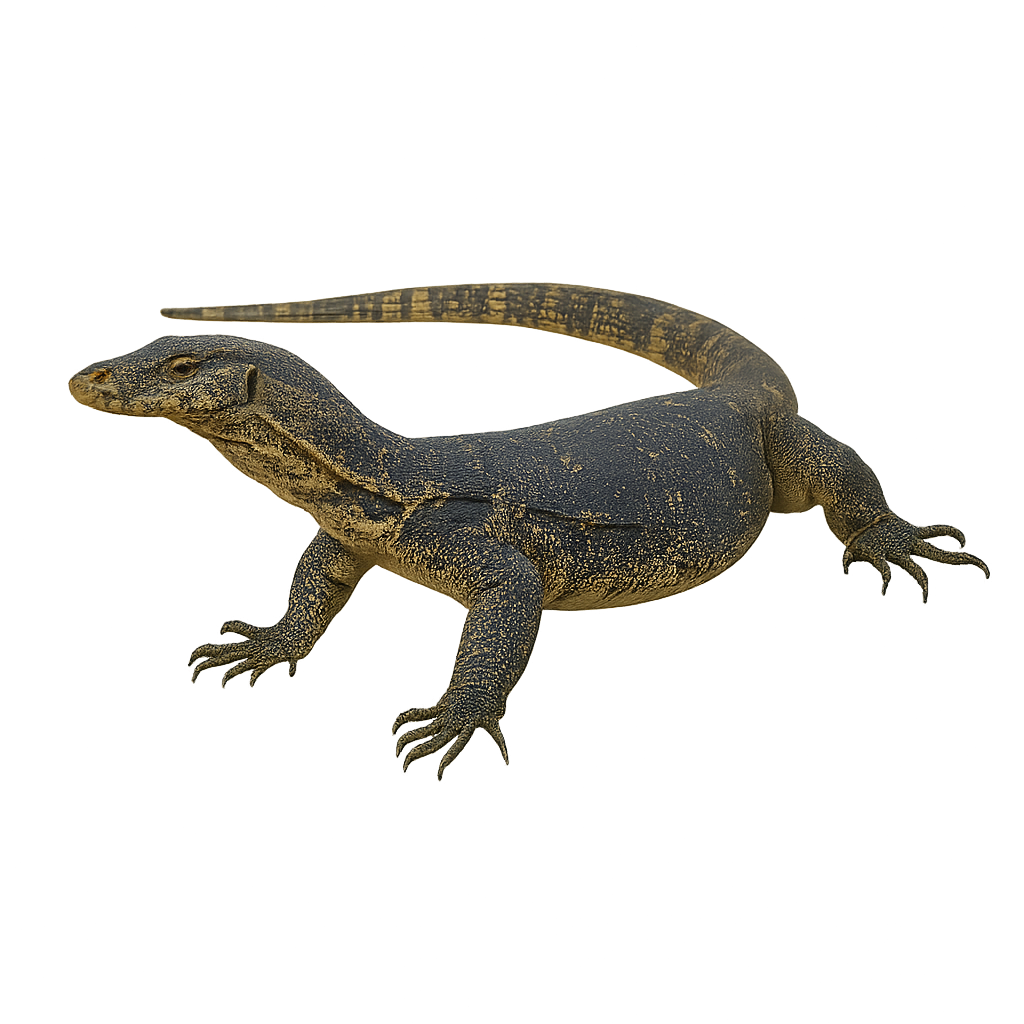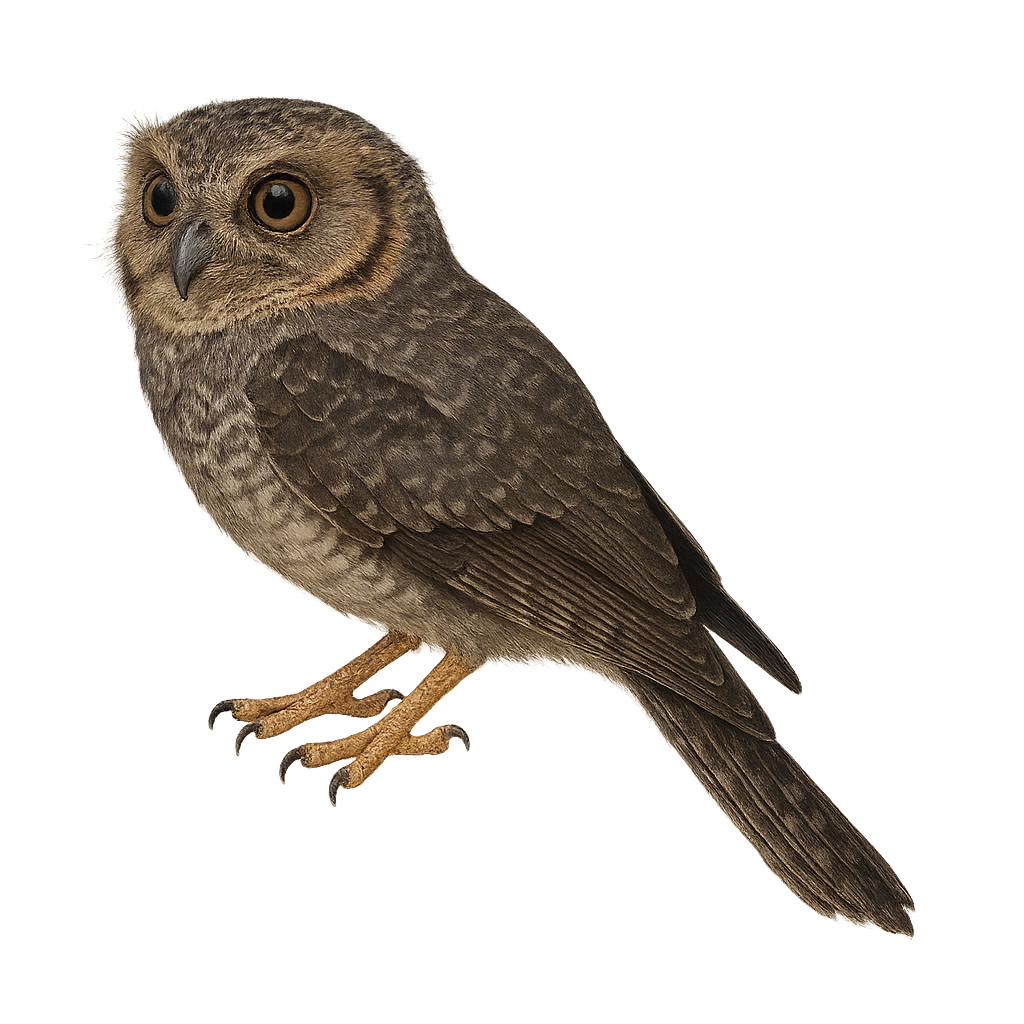The Austen's Brown Hornbill, Anorrhinus austeni, is a captivating bird belonging to the Bucerotidae family. This medium-sized hornbill is notable for its brown plumage and distinctive white tail band. Males and females exhibit sexual dimorphism, with males having larger, more curved bills. These birds primarily inhabit the tropical rainforests of Southeast Asia, feeding on fruits, insects, and small vertebrates. Known for their social behavior, they often live in family groups. Nesting occurs in tree cavities, where the female is sealed in during incubation. Although their population is stable, deforestation poses a threat to their natural habitat.
The African Pied Hornbill, or Tockus fasciatus, is a striking bird known for its black and white plumage and distinctive silver cheeks. Found mainly in West Africa, it inhabits tropical forests and wooded savannas. Its diet consists mainly of fruits, insects, and small vertebrates. Known for its social behavior, the hornbill is often seen in small groups or pairs. It nests in tree cavities, where the female is sealed in during incubation. The male provides food until the young are ready to leave the nest. This species plays a crucial role in seed dispersal, contributing to the health of forest ecosystems.
The African Dwarf Hornbill, or Lophoceros camurus, is the smallest hornbill species in Africa. It is easily recognized by its glossy black plumage, white belly, and large curved red bill with no casque. It inhabits the humid tropical forests of Central Africa, especially in Cameroon, Gabon, the Republic of the Congo, and northern DRC. It forages mainly in the canopy, feeding on fruits, insects, and small vertebrates. Though discreet, it is active and often seen in pairs or small family groups. While understudied, it appears locally common but remains vulnerable to habitat loss.
The Angel's Chameleon, Furcifer angeli, is a chameleon species endemic to Madagascar. This reptile displays vibrant colors, ranging from green to blue, with distinctive patterns that allow it to blend into its natural environment. It is primarily arboreal, living in the island's humid tropical forests. Its average size is about 20 to 25 cm, making it relatively small compared to other chameleon species. It mainly feeds on insects, which it captures with its extendable tongue. Habitat conservation is crucial, as deforestation threatens its survival. Although little studied, it is considered a vulnerable species.
The Australian Wood Duck, Chenonetta jubata, is a waterfowl native to Australia, known for its distinctive plumage and crest of feathers on its head. Males have a dark brown head and grey body, while females display a more subdued plumage with speckled patterns. These ducks prefer wetlands, rivers, and lakes but can also be found in grasslands and urban parks. They primarily feed on aquatic plants, seeds, and insects. Their social behavior is interesting, as they often form family groups. Although generally tolerant of humans, they can become wary if disturbed.
The American Wigeon, Mareca americana, is a dabbling duck species known for its striking plumage and feeding habits. The male features an iridescent green head with a distinctive white forehead stripe, while the female has a more subdued brown-gray plumage. These ducks are commonly found in wetlands, lakes, and marshes, feeding primarily on aquatic plants. They are migratory, spending summers in northern North America and wintering further south. Their flight is fast and direct, often seen in large flocks. Although generally wary, they can become accustomed to human presence in protected areas.
The African Black Duck, or Anas sparsa, is a medium-sized waterfowl known for its dark plumage and distinctive white wing markings. This duck is often found in fast-flowing rivers and streams in the mountainous regions of sub-Saharan Africa. Well adapted to its environment, it prefers swift waters where it can dive for small invertebrates and aquatic plants. Its discreet behavior and dark coloration allow it to blend into the shadows of waterways, making it difficult to spot. Although generally solitary or in small groups, it can sometimes be seen in pairs, especially during the breeding season.
The Andean Pipit, or Catamenia analis, is a small passerine bird found mainly in the mountainous regions of South America. It is recognizable by its brownish-grey plumage with dark streaks on the back and a lighter chest. This bird is well adapted to high altitudes, often seen between 1000 m and 4000 m. It primarily feeds on seeds and insects, which it finds by foraging on the ground. The Andean Pipit is a relatively discreet bird, but its melodious song can be heard during the breeding season. It builds its nest on the ground, hidden among grasses and shrubs.
The Alpine Chamois is an elegant and agile ungulate, well adapted to the mountainous environments of the Alps, Pyrenees, and other mountain regions of Europe. It is distinguished by its reddish-brown coat in the summer, which becomes more gray and thicker in the winter, helping it endure the cold temperatures. The Alpine Chamois has small, curved horns, present in both males and females, but larger in adult males.
This ruminant primarily inhabits rocky slopes, mountain forests, and alpine meadows, where it feeds mainly on herbaceous vegetation, mosses, and lichens. The Alpine Chamois is an excellent climber, able to move with agility over steep and rocky terrain. It is usually solitary or lives in small family groups, but may also gather in larger herds during the winter. Although its population is stable in many areas, the Alpine Chamois remains vulnerable to hunting and human disturbances in its mountainous habitats.
The African Golden Cat is a rare and mysterious small feline, characterized by its silky golden coat and pointed ears adorned with tufts of black hair. This medium-sized cat primarily inhabits the forests and savannas of West Africa, where it preys mainly on birds, small mammals, and reptiles. Its golden coat, which gives it its name, is perfect for camouflaging in tall grasses and foliage.
The African Golden Cat is a discreet and solitary hunter, primarily active at dawn and dusk. Although it is rare and difficult to observe due to its nocturnal habits, it plays an important role in regulating prey populations. The species is threatened by habitat loss and poaching, although conservation efforts are in place to protect this elusive feline.
The African Wildcat is a small, discreet, and nocturnal feline, primarily found in desert regions, savannas, and open forests of North and Sub-Saharan Africa. It is often compared to the domestic cat but has a more uniform coat, typically sandy or gray-brown, with light markings on the head and paws. Its eyes are large, adapted for nocturnal vision, and its ears are pointed, enhancing its wild appearance.
This cat is a solitary hunter, feeding mainly on small mammals, birds, and insects. Although shyer than its domestic cousin, it plays an essential role in regulating prey populations in its habitat. It is also known as the ancestor of the domestic cat, which was domesticated from this species around 10,000 years ago. While the African Wildcat is still relatively widespread, it is threatened by habitat loss and human conflict.
The Alpine Chough, or Pyrrhocorax graculus, is a mountain bird from the Corvidae family. It is recognized by its glossy black plumage, bright yellow bill, and red legs. This bird is often seen in the Alps and the Pyrenees, where it moves in noisy flocks. Exceptionally agile in flight, it can skillfully maneuver in updrafts. Opportunistic, it feeds mainly on insects, fruits, and food scraps left by hikers. The chough is a sociable bird, often not very shy, and easily approaches humans. It nests in rock crevices and cliffs, usually laying three to five eggs.
The Asian Barred Owlet, or Glaucidium cuculoides, is a small nocturnal bird of prey belonging to the Strigidae family. It is mainly found in South and Southeast Asia, particularly in the forests of the Himalayas, from northern India to China and Indonesia. It is characterized by its brown plumage with white bars on the chest and wings, and its piercing yellow eyes. Measuring about 22 to 25 cm in length, it is known for its distinctive call that resembles that of a cuckoo. It primarily feeds on insects, small mammals, and birds. The Asian Barred Owlet is a discreet bird, often difficult to spot due to its plumage that blends perfectly with its forest environment.
The Abdim's Stork, scientifically known as Ciconia abdimii, is a bird species belonging to the Ciconiidae family. It is easily identifiable by its black and white plumage, grey bill, and red legs. This stork is mainly found in sub-Saharan Africa, where it inhabits savannas, grasslands, and wetlands. It is migratory and moves in large colonies. The Abdim's Stork feeds primarily on insects, small reptiles, and amphibians. It is known for its social behavior and tolerance of human presence. Although its conservation status is currently "least concern," it remains vulnerable to environmental changes and habitat loss.
The African civet, Civettictis civetta, is a medium-sized carnivorous mammal known for its spotted coat and distinctive black band across its eyes. Native to sub-Saharan Africa, it primarily inhabits savannas, forests, and woodlands. It is mainly nocturnal, feeding on a variety of foods, including fruits, insects, and small animals. The African civet is also known for producing a musky secretion used in the perfume industry. Although generally solitary, it can sometimes be seen in small groups. Its adaptability to various habitats and diverse diet make it a resilient species, though habitat loss and hunting can pose threats.
The African palm civet is a small feliform mammal, 43–71 cm long and weighing 1.4–4.5 kg, with grey to dark brown fur spotted with dark markings. It is native to sub-Saharan Africa, inhabiting moist forests where it feeds on fruits, aquatic invertebrates and small vertebrates at night. Crepuscular and nocturnal, it sleeps in trees during the day and forages at dusk and night.
The Allen's Hummingbird, or Selasphorus sasin, is a small, vibrant bird primarily found along the western coast of North America. This hummingbird is known for its striking plumage, featuring copper and green hues. Males display a brilliant reddish-orange throat, while females and juveniles are more subdued with green and white tones. These birds are renowned for their rapid and agile flight, often seen hovering around flowers to feed on nectar. They play a crucial role in pollination. The Allen's Hummingbird is also famous for its seasonal migrations, traveling between breeding grounds and wintering areas.
The Angolan colobus, or Colobus angolensis, is an arboreal primate known for its striking black and white fur. This monkey is particularly recognizable by the long white fringes adorning its shoulders and tail. It primarily inhabits the tropical forests of Central and East Africa, spending most of its time in the canopy. The Angolan colobus is a strict herbivore, feeding mainly on leaves, fruits, and flowers. It lives in social groups of up to 15 individuals, led by a dominant male. Although its habitat is threatened by deforestation, it remains relatively widespread in some areas.
The Andean condor is one of the largest flying birds in the world, known for its impressive wingspan reaching up to 3.3 meters. It primarily inhabits the Andean mountains, where it feeds on animal carcasses. Its majestic flight and habit of soaring at high altitudes make it a fascinating subject for photographers. Although protected, the Andean condor is threatened by habitat loss and poisoning from consuming contaminated carcasses.
The Andean Cock-of-the-rock, Rupicola peruvianus, is a striking bird found in the humid forests of the Andes. The male is known for its vibrant orange plumage, while the female is more subdued with brownish tones. This bird is famous for its elaborate courtship displays, where males gather in leks to perform dances and distinctive calls to attract females. Primarily frugivorous, it plays a crucial role in seed dispersal, aiding in the regeneration of its habitat. Although currently listed as "Least Concern," deforestation and habitat loss pose potential threats to its survival.
The American Crow, scientifically known as Corvus brachyrhynchos, is a medium-sized bird, measuring about 40 to 50 cm in length with a wingspan of 85 to 100 cm. Its plumage is entirely black with metallic sheens under light. This bird is highly adaptable and can be found in various habitats, including forests, fields, and even urban areas. It is omnivorous, feeding on fruits, insects, small animals, and human waste. The American Crow is known for its remarkable intelligence, capable of using tools and solving complex problems. It usually lives in groups and communicates through a series of calls and caws.
The Aesculapian Snake is a non-venomous, long and slender snake that can reach up to 2 meters in length. Its coloration ranges from olive green to brown, with smooth scales and a metallic sheen. It inhabits temperate forests, hedgerows, fallow lands, and rocky areas, often near human settlements. It is diurnal and arboreal, primarily feeding on small mammals, birds, lizards, and eggs. Reproduction occurs in spring, with 2 to 18 eggs laid and incubated for 6 to 10 weeks. Protected species in Europe, it is listed as Least Concern by the IUCN.
The American Kestrel, or Falco sparverius, is the smallest falcon in North America. It is known for its colorful plumage, featuring shades of rufous, blue-gray, and black. Males have blue wings and a spotted chest, while females display more uniform tones. This raptor is famous for its ability to hover in place, scanning the ground for prey. It primarily feeds on small mammals, insects, and occasionally small birds. Adaptable, it inhabits various environments, from open fields to urban areas. Its presence is often marked by its sharp, piercing call.
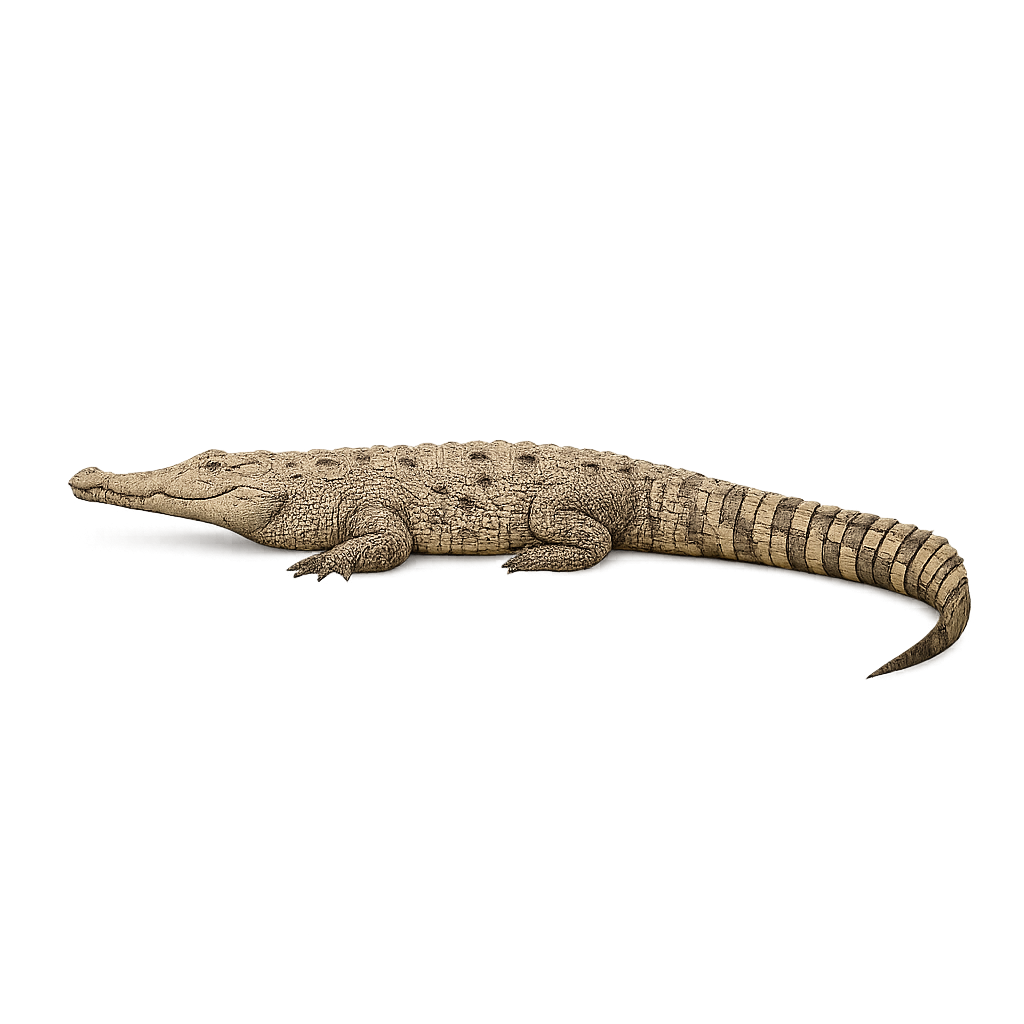
The American Crocodile, also known by the scientific name Crocodylus acutus, is a large reptile distinguished by its impressive size and broad distribution. It can reach lengths of 6 to 7 meters, although some individuals can exceed this size. Its body is covered with green to gray scales, often speckled with darker patches, which help it blend perfectly into the brackish waters and marshlands of its habitats. The American crocodile primarily lives in coastal and estuarine areas, where it feeds on fish, birds, and small mammals. It is an opportunistic hunter and can occasionally capture large prey when they venture too close to the water. This reptile is semi-aquatic and spends a significant amount of time in the water, but it is also capable of moving on land. Regarding migration, the American crocodile is relatively sedentary, although it can travel long distances along the coast depending on environmental conditions. It is listed as vulnerable due to habitat loss and intensive hunting for its skin. Potential Threats: habitat loss due to coastal development and water pollution, illegal hunting for its skin and meat.
The Amazonian Poison Frog, Ranitomeya amazonica, is a small, brightly colored frog native to the Amazon rainforest. Known for its vivid colors, often a mix of blue, black, and yellow, it warns predators of its toxicity. This species typically measures between 15 and 20 mm in length. It primarily inhabits humid tropical forests, feeding on small insects. Amazonian Poison Frogs are diurnal, active mainly during the day. Their reproduction involves laying eggs in aquatic microhabitats, often in bromeliads. Although their conservation status is not of concern, habitat destruction remains a potential threat.
The Anthony's Poison Arrow Frog, or Epipedobates anthonyi, is a small, brightly colored frog native to the humid tropical forests of Ecuador and Peru. Known for its vivid and toxic skin, it serves as a defense mechanism against predators. Measuring about 2 to 3 cm, this frog displays bright color patterns, often red and green, warning of its toxicity. It primarily inhabits moist undergrowth and feeds on insects and other small invertebrates. Although its population is stable, it faces threats from deforestation and habitat loss. Its reproduction involves eggs laid on the ground, which males then transport to water bodies for hatching.
The Anna's Flowerpecker is a small, colorful bird found primarily in the tropical and subtropical forests of Southeast Asia. This passerine is recognizable by its vibrant plumage, often adorned with shades of blue, green, and red. It primarily feeds on nectar, fruits, and insects, playing a crucial role in plant pollination. Its song is melodious and varied, making it easily identifiable for birdwatchers. Although generally solitary, it can sometimes be seen in small groups, especially during the breeding season.
The Asian water monitor is a large lizard belonging to the monitor family. It is widely distributed across Southeast Asia and primarily inhabits wetland areas, particularly near rivers, swamps, and lakes. A carnivore, it feeds mainly on fish, amphibians, small mammals, and insects. Capable of swimming and climbing with agility, it is an excellent predator. While not considered threatened, it faces threats due to habitat loss and hunting.
The Australian Owlet-nightjar is a small, nocturnal bird belonging to the Aegothelidae family. It is identifiable by its grey-brown plumage, distinctive white eyebrows, and large eyes adapted for night vision. This bird is primarily endemic to Australia, inhabiting various forest types, including eucalyptus forests and open woodlands. It feeds mainly on insects, which it catches in flight or by foraging through foliage. The Australian Owlet-nightjar is known for its melodious song and varied calls, often heard at dusk and dawn. Although discreet, it is sometimes observed perched at the entrance of tree cavities, where it nests and rests during the day.
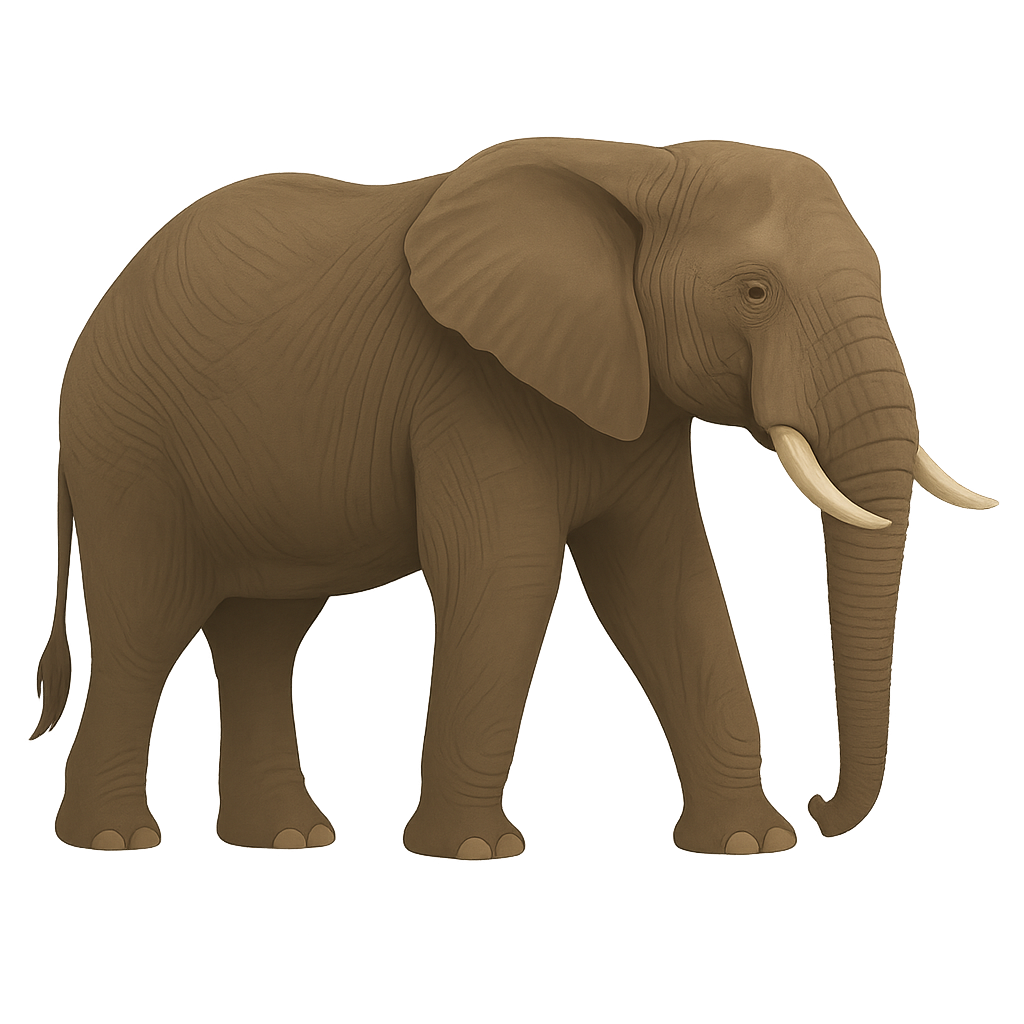
The African Savannah Elephant is the largest land mammal, and the largest of all terrestrial animals. It can stand up to 4 meters tall at the withers and weigh between 4,000 and 7,500 kg. Its coat is gray, with rough skin often covered in dust or mud to protect it from the sun and parasites. The African Savannah Elephant is easily recognizable by its large ears, shaped like the map of Africa, which help regulate its body temperature. This elephant is primarily herbivorous, feeding on leaves, bark, fruits, and plants. It inhabits savannas, grasslands, and open forests across sub-Saharan Africa. The African Savannah Elephant is a social animal, living in family groups led by an older female. It plays a crucial role in its ecosystem by creating openings in vegetation and dispersing seeds. However, the species is threatened by habitat loss, poaching for its valuable tusks, and conflicts with human communities. The African Savannah Elephant is currently listed as vulnerable by the International Union for Conservation of Nature (IUCN).


